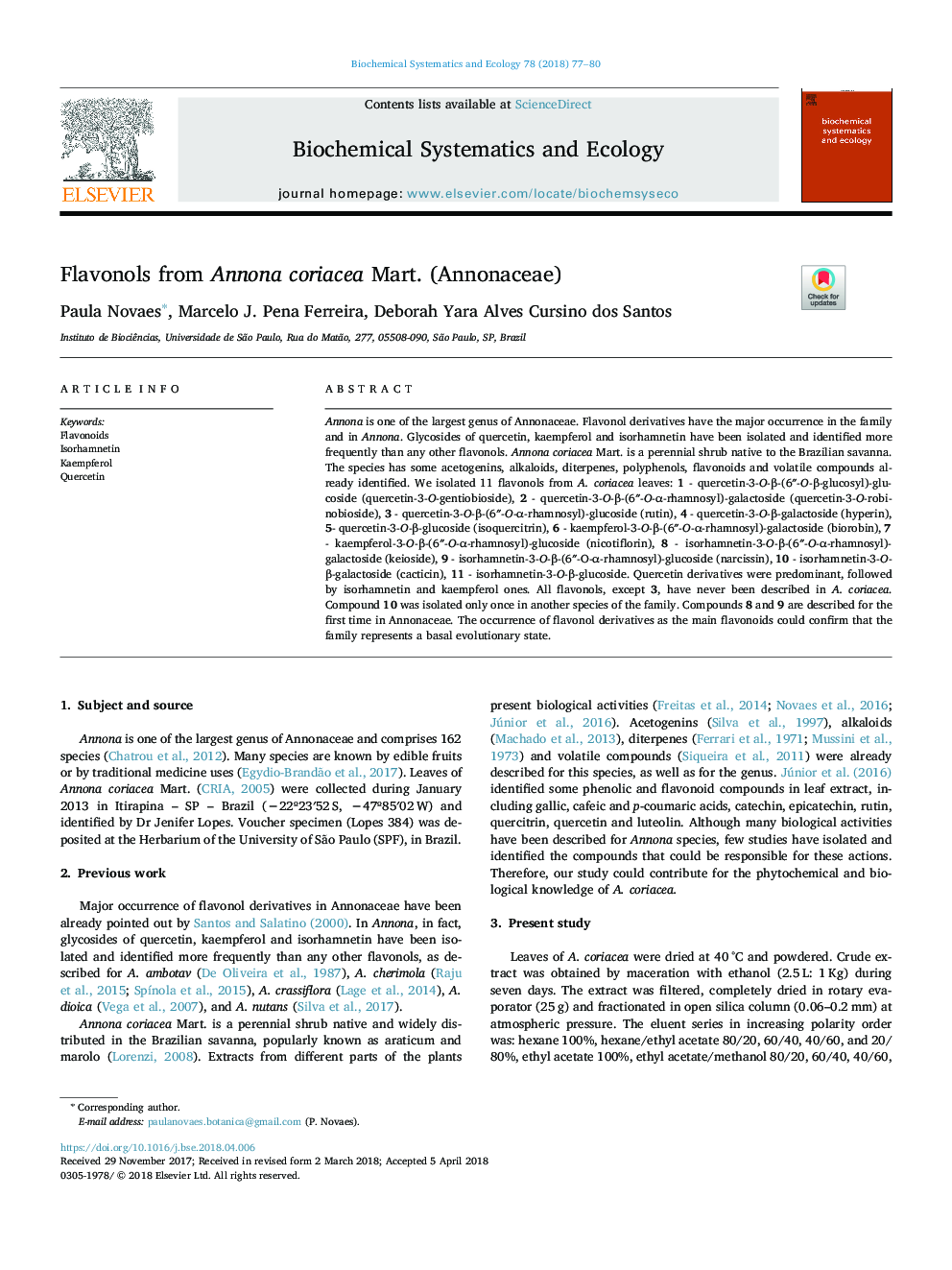| Article ID | Journal | Published Year | Pages | File Type |
|---|---|---|---|---|
| 7767645 | Biochemical Systematics and Ecology | 2018 | 4 Pages |
Abstract
Annona is one of the largest genus of Annonaceae. Flavonol derivatives have the major occurrence in the family and in Annona. Glycosides of quercetin, kaempferol and isorhamnetin have been isolated and identified more frequently than any other flavonols. Annona coriacea Mart. is a perennial shrub native to the Brazilian savanna. The species has some acetogenins, alkaloids, diterpenes, polyphenols, flavonoids and volatile compounds already identified. We isolated 11 flavonols from A. coriacea leaves: 1 - quercetin-3-O-β-(6â³-O-β-glucosyl)-glucoside (quercetin-3-O-gentiobioside), 2 - quercetin-3-O-β-(6â³-O-α-rhamnosyl)-galactoside (quercetin-3-O-robinobioside), 3 - quercetin-3-O-β-(6â³-O-α-rhamnosyl)-glucoside (rutin), 4 - quercetin-3-O-β-galactoside (hyperin), 5- quercetin-3-O-β-glucoside (isoquercitrin), 6 - kaempferol-3-O-β-(6â³-O-α-rhamnosyl)-galactoside (biorobin), 7 - kaempferol-3-O-β-(6â³-O-α-rhamnosyl)-glucoside (nicotiflorin), 8 - isorhamnetin-3-O-β-(6â³-O-α-rhamnosyl)-galactoside (keioside), 9 - isorhamnetin-3-O-β-(6â³-O-α-rhamnosyl)-glucoside (narcissin), 10 - isorhamnetin-3-O-β-galactoside (cacticin), 11 - isorhamnetin-3-O-β-glucoside. Quercetin derivatives were predominant, followed by isorhamnetin and kaempferol ones. All flavonols, except 3, have never been described in A. coriacea. Compound 10 was isolated only once in another species of the family. Compounds 8 and 9 are described for the first time in Annonaceae. The occurrence of flavonol derivatives as the main flavonoids could confirm that the family represents a basal evolutionary state.
Related Topics
Physical Sciences and Engineering
Chemistry
Organic Chemistry
Authors
Paula Novaes, Marcelo J. Pena Ferreira, Deborah Yara Alves Cursino dos Santos,
